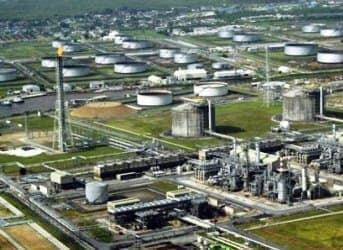Kenya is moving forward incrementally with its massive $24 billion regional infrastructure project, the Lamu Port-South Sudan-Ethiopia Transit Corridor (LAPSSET), awarding a key tender to a Chinese company.
In early April, a consortium led by China Communications Construction Company won the tender to build the first three berths at Kenya’s Lamu Port—the first step towards an overall plan that will link South Sudan and Ethiopia—both landlocked—to the Indian Ocean port and create the infrastructure necessary to bring East African hydrocarbons to international markets.
This is the second major tender for China Communications Construction Company, whose China Road and Bridge Corporation (CRBC) paid $66.7 million to expand Kenya’s Mombasa port in 2011, and another $2.66 billion in 2012 to build a railway connecting Mombasa to the capital, Nairobi. The Mombasa port is East Africa’s largest.
LAPSSET is where economics and vanity collide: The LAPSSET corridor will turn Kenya into a gateway for business in East Africa and the Great Lakes Region, as well as the key transport hub for the entire region.
LAPSSET includes the new Lamu Port in Kenya, a major regional highway and railway and a pipeline.
Specifically, the project includes:
Related article: Ghana to build black Africa’s first Nuclear Power Plant?
• Lamu Port in Kenya, with 32 berths costing $5.3 billion
• A $2.8 billion oil refinery at Lamu Port (this will be Kenya’s second oil refinery, with the Mombasa Refinery at a 70,000bpd capacity)
• A $3.9 billion, 1,300km oil pipeline running from Lamu to South Sudan, which will double as a fiber optic route
• 1,720km super highway connecting Ethiopia to South Sudan
• An $8.08 billion, 1,620km (standard gauge) railway line running from Lamu to Juba, with a branch to Ethiopia; costs to be shared by Nairobi, Juba and Addis Ababa
• Three international airports: Lamu, Isiolo, Lokichogio
Kenya is hoping that the tender for the first three berths will be the ground-breaking event that will bring other investors to the table. This is where the critics like to chime in—and some of them say the project is too grand and represents an astronomical waste of money that could be used to rebuild the country’s existing infrastructure rather than focusing on making Kenya the regional powerhouse.
How much money is still needed to make this project a reality? Almost all of the total cost, minus the three berths just tendered out to the Chinese. The Development Bank of Southern Africa (DBSA) may pitch in $1.5 billion, but it’s not a done deal and only a drop in this bucket.
The Kenyan government also isn’t quite sure yet how private investors could play a role. They are considering the possibility of private public partnerships (PPP) and joint ventures, but nothing is set in stone yet.
How much money is still needed to make this project a reality?
In early April, the Kenyan government set up an independent body to monitor the implementation of LAPSSET, which will be tasked with controlling investment and construction.
But there’s another angle to this story that could be upsetting to LAPSSET: South Sudan is no longer desperate for this project to go ahead.
Now that Sudan and South Sudan have made up for the most part, with South Sudan resuming oil production and exports, the building of LAPSSET is a bit less urgent, and there is time now to consider alternative pipelines—and less pressure. South Sudan is also planning to build its own refinery, which will further reduce its dependence on Kenyan infrastructure projects.
ADVERTISEMENT
Related article: Libya's Security Should Mirror Oil Ambitions
If the South Sudan-Sudan agreement holds out, it could lead to rethink of the LAPSSET acronym, particularly the “SS”. South Sudan’s crude might not be available for the LAPSSET pipeline and connected refineries in the volumes planned.
Will it put the entire LAPSSET project at risk? Well, it does at present depend on crude from South Sudan, but we’ll go with the optimistic scenario that Kenya will prove commercial viability of its recent massive discoveries soon. So, there should be enough crude to make this enormous infrastructure project feasible. There is also a good chance that South Sudan will start exploration for new hydrocarbons reserves in the near future.
Neighboring Uganda—which sitting on massive reserves itself—could also choose to hook up to the Kenyan infrastructure project to boost available volumes of crude. And then there is always the hope that Tullow will make its first major discovery in Ethiopia—on an extension of its Kenyan finds—soon.
By. Charles Kennedy of Oilprice.com


















